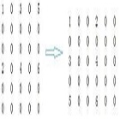Customer churn describes terminating a relationship with a business or reducing customer engagement over a specific period. Two main business marketing strategies play vital roles to increase market share dollar-value: gaining new and preserving existing customers. Customer acquisition cost can be five to six times that for customer retention, hence investing in customers with churn risk is smart. Causal analysis of the churn model can predict whether a customer will churn in the foreseeable future and assist enterprises to identify effects and possible causes for churn and subsequently use that knowledge to apply tailored incentives. This paper proposes a framework using a deep feedforward neural network for classification accompanied by a sequential pattern mining method on high-dimensional sparse data. We also propose a causal Bayesian network to predict cause probabilities that lead to customer churn. Evaluation metrics on test data confirm the XGBoost and our deep learning model outperformed previous techniques. Experimental analysis confirms that some independent causal variables representing the level of super guarantee contribution, account growth, and customer tenure were identified as confounding factors for customer churn with a high degree of belief. This paper provides a real-world customer churn analysis from current status inference to future directions in local superannuation funds.
翻译:摘要:客户流失指在特定时间内终止与企业的关系或减少客户参与度。营销策略中的两个主要目标是获得新客户和保留现有客户,这对于增加市场份额的美元价值至关重要。客户获取成本可能是客户保留成本的五到六倍,因此投资具有流失风险的客户是明智的。流失模型的因果分析可以预测客户在可预见的未来是否会流失,并帮助企业识别影响和可能导致流失的原因,随后利用这些知识来应用定制的激励措施。本文提出了一个框架,该框架使用深度前馈神经网络进行分类,并采用高维稀疏数据的顺序模式挖掘方法。我们还提出了一个因果贝叶斯网络,以预测导致客户流失的因果概率。测试数据上的评估指标证实了XGBoost和我们的深度学习模型优于先前的技术。实验分析证实,一些独立的因果变量,表示超级保证金贡献水平、账户增长和客户任期,被确定为客户流失的混淆因素,且置信度很高。本文提供了一个现实世界的客户流失分析,从当前状态推断到本地养老基金的未来方向。

